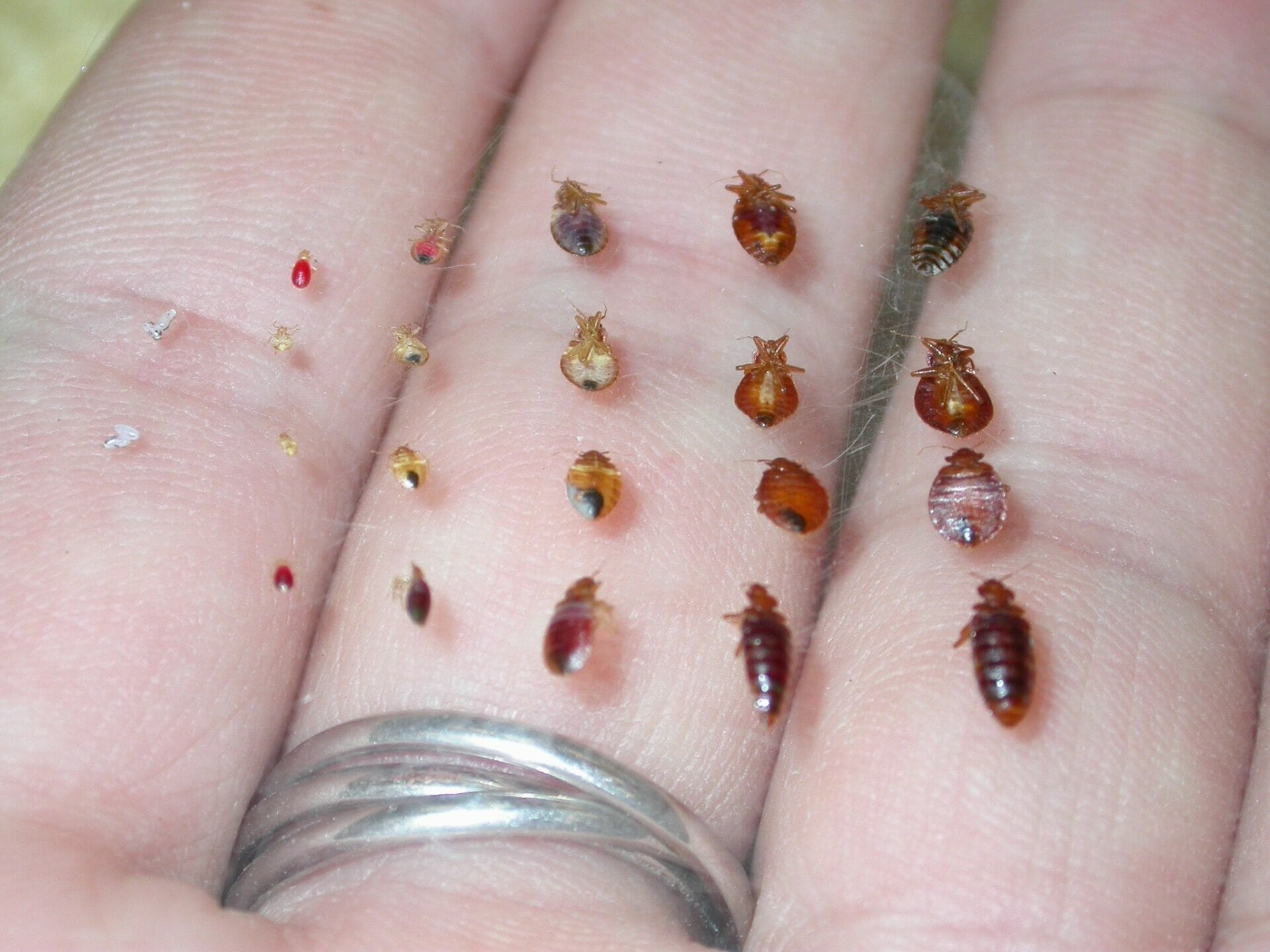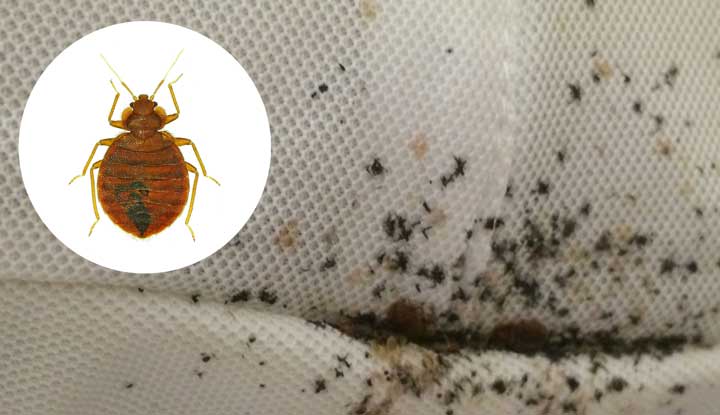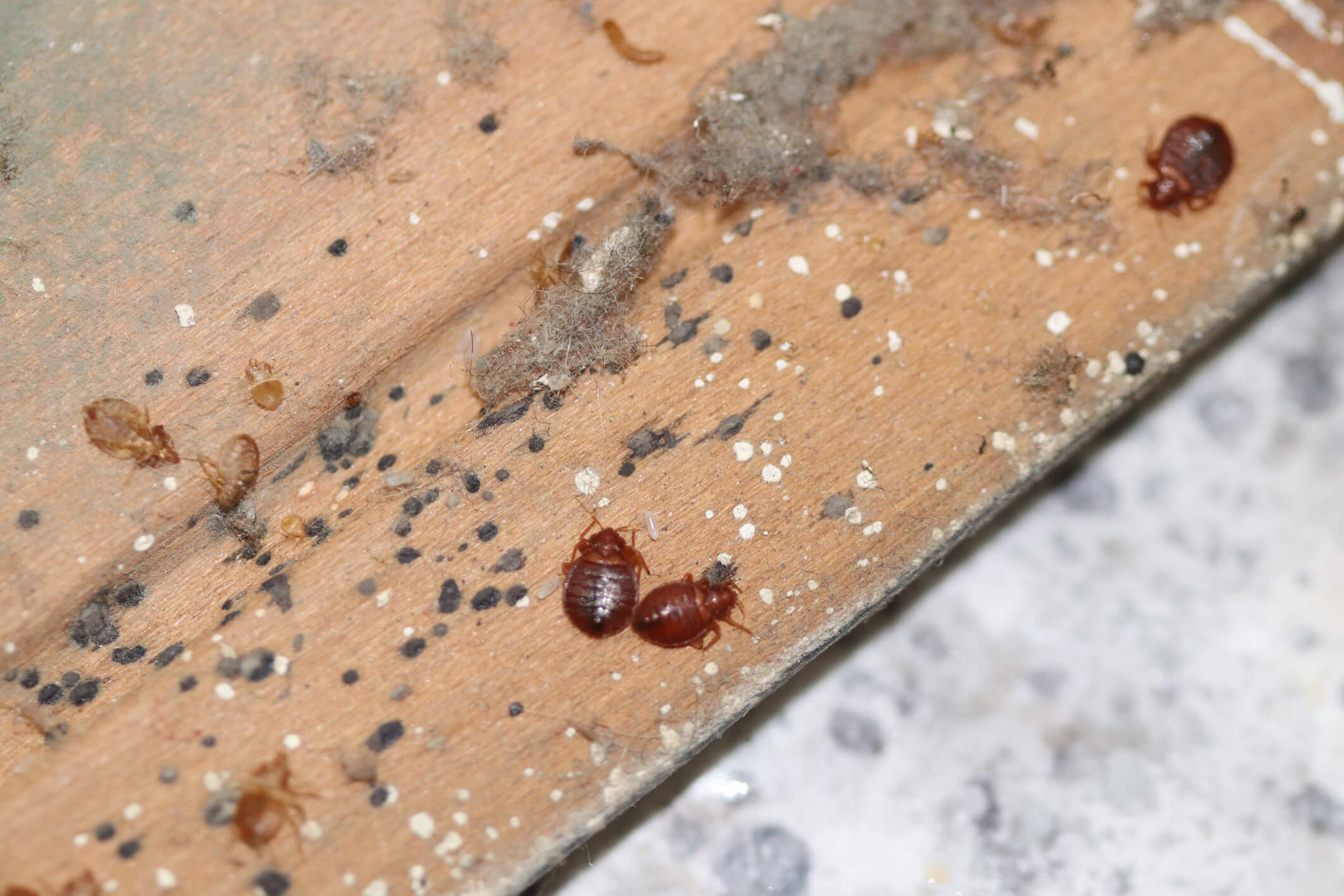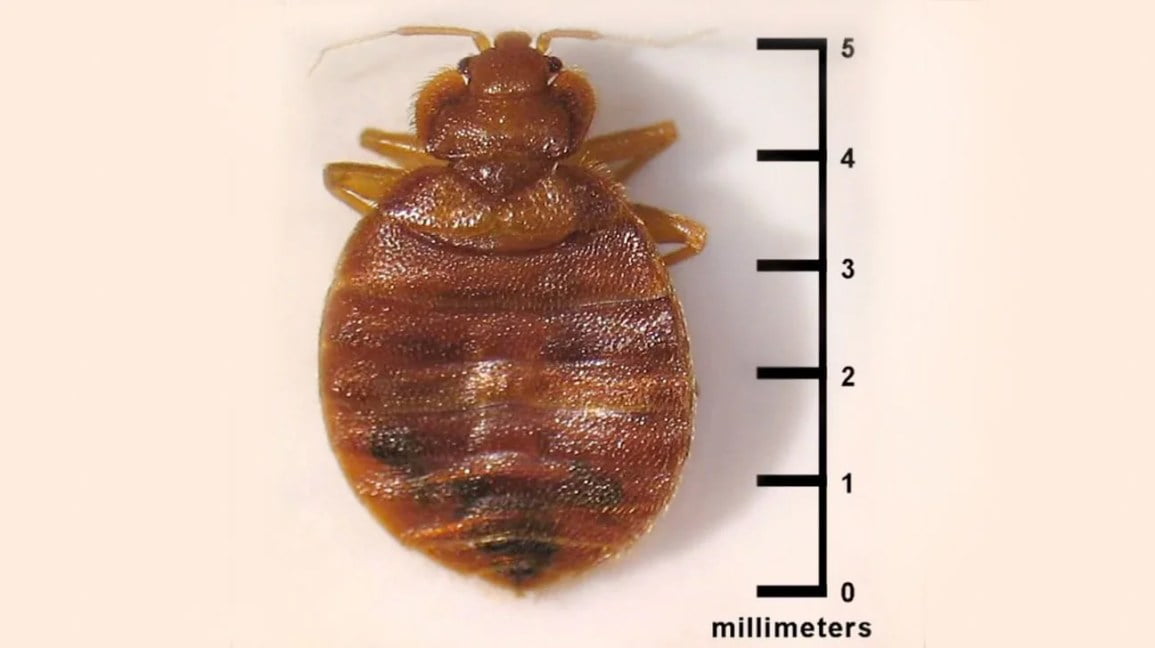Bed bugs get big by undergoing multiple stages of development, known as molting. They molt and go through five nymphal stages before reaching adulthood.
As bed bugs feed on blood, they grow in size and molt to accommodate their increased body mass. Bed bugs are small, flat insects that feed on blood. They can be found in homes, hotels, and other places where people live and sleep.
These pests can be difficult to control and eliminate once they infest a space. Understanding how bed bugs grow and develop is crucial to effectively dealing with an infestation. We will explore the life cycle of bed bugs, their growth and development, and the factors that contribute to their size as they mature. Understanding these aspects can help in implementing effective measures for controlling and eliminating bed bugs from your environment.
The Life Cycle Of Bed Bugs
Bed bugs, like all insects, undergo a series of developmental stages as they grow and mature. Understanding the life cycle of bed bugs is crucial in effectively managing and eradicating infestations. From eggs to nymphs to adult bugs, each stage presents unique challenges for homeowners and pest control professionals. Let’s delve into the life cycle of these pesky pests.
Egg Stage
Bed bug eggs are tiny, about the size of a pinhead, and are typically laid in clusters within cracks and crevices near their feeding sources. These translucent white eggs hatch in about 6 to 10 days, depending on environmental conditions such as temperature and humidity.
Nymph Stage
Once hatched, the bed bug larvae, known as nymphs, go through five molting stages, shedding their exoskeletons as they grow. These nymphs require a blood meal to progress to the next stage, and they are translucent and lighter in color than adult bed bugs.
Adult Stage
After five molting stages, the nymphs become mature adult bed bugs. They are about the size of an apple seed, flat, oval-shaped, and reddish-brown in color. Adult bed bugs require regular blood meals to reproduce and can live for several months without feeding in the right conditions.
Factors Affecting The Growth Of Bed Bugs
Bed bugs grow due to favorable conditions such as warm temperatures, access to blood for feeding, and harborage locations. Since they are resilient pests, it’s important to address infestations promptly. Regular inspections and prompt treatment can help manage and prevent their growth.
Factors Affecting the Growth of Bed BugsFeeding HabitsBed bugs require blood meals to grow. They feed on both human and animal blood. After feeding, they grow significantly, with their body becoming engorged with blood. The frequency of feeding impacts their growth rate.Temperature and EnvironmentBed bugs thrive in warm temperatures of around 70-80°F. They cannot survive in extreme heat or cold. The ideal environment for their growth includes cracks and crevices in furniture, walls, and bedding.Reproduction RateFemale bed bugs can lay hundreds of eggs in their lifetime. The eggs hatch in about 6-10 days, leading to a rapid increase in the infestation. The high reproduction rate contributes to the overall growth of the bed bug population.These factors play a crucial role in the development and proliferation of bed bugs. Understanding their feeding habits, preferred temperature and environment, and reproduction rate is essential in implementing effective control and elimination strategies.Impacts Of Bed Bug Infestations
Bed bugs are more than just pesky insects that cause itchy bites; they can have significant impacts on both your health and finances. Additionally, the psychological effects of a bed bug infestation can take a toll on your well-being. Understanding the ramifications of these infestations is crucial in tackling the problem effectively.
Health Risks
Bed bugs may seem harmless, but their presence can pose several health risks. While they are not known to transmit diseases directly, their bites can lead to various complications, including:
- Allergic reactions: Some individuals may experience severe allergic reactions to bed bug bites, leading to swelling, itching, and even anaphylaxis in rare cases.
- Skin infections: Scratching the bites excessively can break the skin, potentially leading to secondary infections that require medical attention.
- Sleep disturbances: Bed bug infestations often coincide with sleep disruptions due to the discomfort caused by their bites. This can result in daytime fatigue, decreased productivity, and overall decreased quality of life.
Financial Costs
The financial implications of a bed bug infestation can be significant, often requiring professional intervention to eradicate the problem. Consider the following expenses:
| Financial Costs | Description |
|---|---|
| Professional extermination | Seeking professional help is often necessary to completely rid your home of bed bugs, which can be a costly service. |
| Replacing infested items | In severe cases, you may need to dispose of heavily infested furniture, bedding, and other belongings, incurring additional costs. |
| Temporary accommodation | If the infestation becomes unbearable, you may have to temporarily relocate to a hotel or other accommodation, adding to the financial burden. |
Psychological Effects
The psychological effects of a bed bug infestation should not be underestimated. Living with these pests can cause significant distress, anxiety, and even lead to mental health issues such as insomnia and depression. The constant worry about being bitten and the fear of bringing them to other places can be overwhelming.
- Stress and anxiety: Bed bug infestations can cause extreme stress and anxiety, impacting your emotional well-being and overall quality of life.
- Insomnia: The persistent worry and discomfort caused by bed bugs can disrupt your sleep patterns, leading to insomnia and its associated health consequences.
- Social isolation: The stigma surrounding bed bugs may cause individuals to isolate themselves, avoiding social gatherings and interactions out of fear of spreading the infestation.

Credit: www.xtermin.com
Prevention And Control Measures
When it comes to dealing with bed bugs, prevention and control measures are essential to keep these pesky pests at bay. By implementing effective strategies, you can minimize the risk of infestations and maintain a hygienic living environment. Let’s explore some practical methods to prevent and control bed bugs.
Cleaning Practices
Regular cleaning is crucial for preventing and controlling bed bugs. Create a routine for thorough cleaning, including vacuuming and washing linens, to eliminate potential hiding spots for bed bugs. Ensure to focus on areas such as mattresses, furniture, and carpets which are common retreats for bed bugs.
Sealing Cracks And Crevices
Sealing cracks and crevices in your home is a fundamental step in bed bug prevention. Inspect and seal any gaps in walls, floors, and furniture where bed bugs could potentially hide. By eliminating these hiding spots, you can hinder their ability to reinfest your living space.
Professional Pest Control Services
When dealing with a severe infestation, seeking professional pest control services can be highly effective. Professional pest control experts have the knowledge, tools, and experience necessary to address bed bug infestations comprehensively, ensuring thorough eradication and prevention of future outbreaks.
Common Myths About Bed Bugs
When it comes to bed bugs, there are several common myths that have created many misconceptions. Let’s debunk two of the most prevalent myths about these pesky pests.
Bed Bugs Are Only Found In Unhygienic Places
Contrary to popular belief, bed bugs are not just limited to unclean environments. They can be found in any place, regardless of cleanliness. Whether it’s a five-star hotel or a humble dwelling, bed bugs have no discrimination when it comes to infesting living spaces.
Bed Bugs Are Too Small To See
Despite their tiny size, bed bugs are indeed visible to the naked eye, especially in their adult stage. They can grow up to 5 mm in length, making it possible to spot them if one pays close attention. Their small size doesn’t make them any less of a nuisance, as they can quickly multiply and infest various areas of a home or building.

Credit: my.clevelandclinic.org
Innovations In Bed Bug Detection And Treatment
Discover cutting-edge methods for detecting and treating bed bugs. Learn how these pests grow and spread in your home. Stay informed on the latest innovations in bed bug control techniques.
In the battle against bed bugs, advancements in detection and treatment have become crucial. Now, let’s explore some cutting-edge methods that are revolutionizing the pest control industry.Canine Inspections
Using trained dogs for bed bug inspections is gaining popularity due to their accuracy. These canines are capable of detecting bed bugs with remarkable precision, even in hard-to-reach areas.Heat Treatment
Heat treatment is a non-chemical approach that involves raising the temperature to a level that is lethal to bed bugs. This method is effective, environmentally friendly, and can penetrate into deep crevices where bed bugs hide.Natural Remedies
Natural remedies are gaining attention as an alternative to conventional pesticides. Essential oils like lavender and tea tree oil have shown promise in repelling and killing bed bugs while being safe for humans.In the ongoing battle against these pesky pests, these innovative approaches offer effective, safe, and environmentally friendly solutions for combating bed bug infestations.Global Impact Of Bed Bug Infestations
Bed bug infestations can have a significant global impact, affecting various industries and economies worldwide. These tiny creatures have managed to thrive in diverse environments and spread rapidly, leading to serious consequences. Here, we will explore the economic ramifications and travel industry impacts stemming from bed bug infestations.
Economic Consequences
Bed bug infestations can prove highly detrimental to local economies, causing financial losses and impacting businesses across various sectors. Here are some key economic consequences:
The tourism industry often bears the brunt of bed bug infestations, as it directly affects the reputation of hotels, hostels, and vacation rentals. Travelers who encounter bed bugs during their stay are likely to share negative experiences online, leading to a decline in bookings and tourist traffic. This reduction in tourism can result in significant revenue losses for businesses and local economies.
Effective eradication of bed bugs requires professional pest control services, which can be expensive both for individuals and businesses. With the need for thorough inspections, treatments, and follow-ups, the costs quickly escalate, burdening affected parties with unexpected expenses.
Bed bug infestations can affect the desirability and value of properties. Homeowners and landlords may struggle to sell or rent their properties due to the negative stigma associated with infestations. This decline in property values can have lasting effects on the overall real estate market.
Travel Industry Impacts
Bed bug infestations pose particular challenges to the travel industry, as their presence directly impacts customer satisfaction and safety. Here are some key travel industry impacts:
Hotels and other accommodations affected by bed bugs often receive negative reviews on travel websites and social media platforms. Travelers’ experiences can be marred by bites, sleepless nights, and the frustration of having to deal with infestations. The negative publicity generated can tarnish an establishment’s reputation and lead to a decrease in bookings.
Bed bug infestations may result in legal actions taken against hotels and other establishments responsible for providing a safe and comfortable environment. Lawsuits can lead to substantial financial settlements and further damage an establishment’s reputation, even if they are ultimately resolved.
Due to the rising concerns surrounding bed bugs, the travel industry has had to adopt stricter regulations and guidelines for pest control. Establishments are now required to follow rigorous prevention measures and take prompt action if an infestation is detected. Compliance with these regulations adds an extra layer of responsibility and expense for businesses.
In conclusion, bed bug infestations have far-reaching impacts worldwide, affecting both economies and the travel industry. The economic consequences range from decreased tourism revenue to increased expenditure and declining property values. Meanwhile, the travel industry faces damaged reputations, increased liability, and the need to adhere to stricter regulations.

Credit: www.sagepestcontrol.com
Frequently Asked Questions Of How Do Bed Bugs Get Big?
How Do Bed Bugs Grow And Become Big?
Bed bugs go through a process called molting, where they shed their skin as they grow. Starting as eggs, they hatch into nymphs and go through five nymph stages. During each stage, they require a blood meal to grow and molt to the next stage.
As they molt, they become larger until they reach adulthood.
How Long Does It Take For Bed Bugs To Reach Their Full Size?
It takes bed bugs about five weeks to reach full adulthood, depending on favorable conditions. During this time, they molt five times, growing in size after each molt. The availability of a host and suitable environmental conditions play a crucial role in their growth and development.
What Factors Contribute To The Growth Of Bed Bugs?
The growth of bed bugs depends on several factors. Temperature, humidity, and presence of a host are key factors. Bed bugs thrive best in temperatures between 70°F and 80°F, with humidity around 70%. Frequent blood meals from a host are essential for their growth and reproduction.
Can Bed Bugs Grow Bigger Than Usual?
Bed bugs typically grow to a specific size based on their species. However, external factors such as abundance of food and suitable conditions can affect their size. If bed bugs have ample access to blood meals, they can potentially grow larger than average.
Conclusion
As we’ve seen, bed bugs grow by molting and feeding on blood. Understanding their life cycle is crucial in controlling infestations. By taking proactive measures and seeking professional help, you can effectively manage bed bug infestations. Stay vigilant and prioritize prevention to keep your home bug-free.

I’m MD Tanvir, and I bring years of expertise gained from working closely with pest control companies to the forefront. My journey in the industry has inspired me to launch Bug Battler, a platform aimed at equipping people with the know-how to combat pests autonomously. Through Bug Battler, I aim to empower individuals with practical insights to tackle pest infestations effectively.

